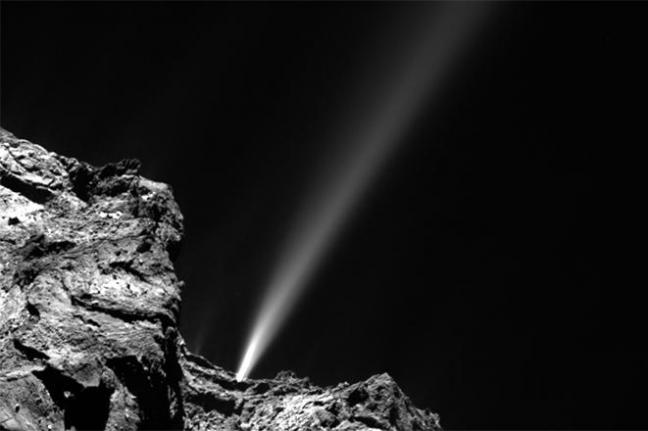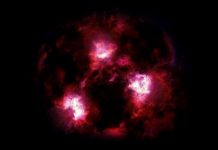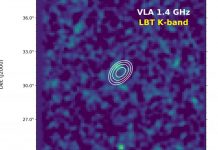GOTTINGEN, Germany, Aug. 12 (UPI) — Comet 67P/Churyumov-Gerasimenko reaches perihelion on Wednesday, its closest approach to the sun before being slung back into the outer reaches of the solar system on its 6.5-year orbit.
At the end of July, the comet shot out its brightest jet yet — an impressive “fireworks display.”
Gas jets become more and more common as comets like 67P/Churyumov-Gerasimenko near the sun and their ice sublimates, releasing volatiles trapped inside.
The burst of gas happened on July 29, and it was so strong that it momentarily pushed away the solar wind magnetic field that surrounds the comet’s nucleus.
Researchers say such bursts could potentially cleave the comet in half.
Scientists at the European Space Agency have, in the past, edited the images returned by Rosetta’s scientific camera OSIRIS in order to highlight the presence of gas jets. Such a touchup was not necessary for the latest outburst. The blast shot out bits of ice and reflective materials, and was easily visible to the naked eye.
Rosetta measured the speed of the blasted fragments at roughly 33 feet per second.
“This is the brightest jet we’ve seen so far,” Carsten Guttler, OSIRIS scientist at Germany’s Max Planck Institute for Solar System Research, said in a press release. “Usually, the jets are quite faint compared to the nucleus and we need to stretch the contrast of the images to make them visible — but this one is brighter than the nucleus.”
More than just provide for impressive pictures, the comet’s expelled gas delivers dust to its mini atmosphere, which interacts with the barrage of high-energy solar particles.







